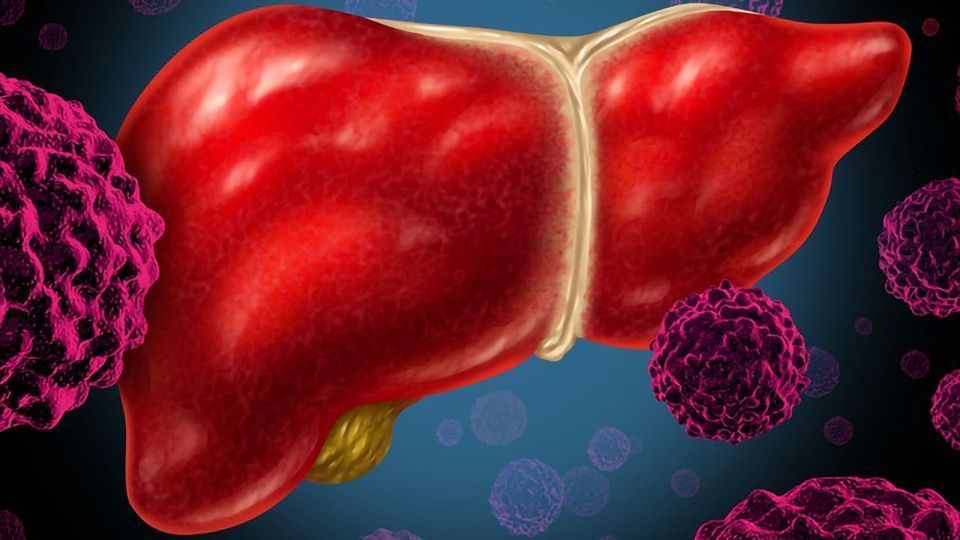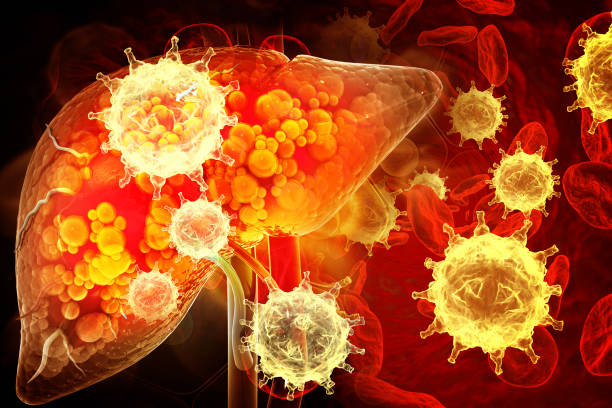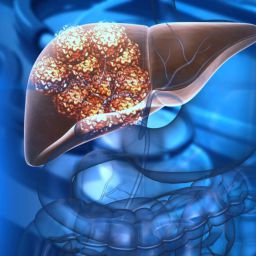
1. What is Liver Metastasis?
Liver metastasis refers to cancer that has spread to the liver from another organ or part of the body. This is different from primary liver cancer, which originates in the liver cells themselves. The liver is a common site for metastasis because of its rich blood supply, which provides a pathway for cancer cells to travel.
Metastatic cancer in the liver often develops when malignant cells from other organs, such as the colon, lungs, or breast, enter the bloodstream or lymphatic system and travel to the liver. Once in the liver, the cancer cells can begin to grow, forming metastatic tumors.
2. Risk Factors for Liver Metastasis
Several factors can increase the risk of liver metastasis, particularly the presence of primary cancers that are more likely to spread to the liver. These include:

- Colorectal cancer: The liver is one of the most common sites for metastasis in patients with colorectal cancer.
- Breast cancer: While breast cancer can spread to other areas, the liver is also a common site for metastasis.
- Lung cancer: Lung cancer is another major contributor to liver metastasis, particularly in the advanced stages of the disease.
- Pancreatic cancer: Pancreatic cancer often metastasizes to the liver, along with other parts of the body.
- Melanoma: This skin cancer can also spread to the liver, often in more advanced cases.
Certain lifestyle factors and pre-existing liver conditions, such as chronic hepatitis or cirrhosis, may also increase the likelihood of liver metastasis.
3. Why Are Early Signs of Liver Metastasis Often Overlooked?
One of the biggest challenges in detecting liver metastasis is that its early symptoms can be quite vague and nonspecific. In the early stages, liver metastasis might not cause significant symptoms, or the symptoms may mimic other conditions, making it difficult for both patients and healthcare providers to identify the problem.
Additionally, the liver has a large capacity to compensate for damage in its early stages, which means that metastases can grow without causing noticeable symptoms until they have reached a more advanced stage. Early signs of liver metastasis may be easily mistaken for other, less serious issues, which is why awareness of the potential symptoms is important.
4. Early Signs and Symptoms of Liver Metastasis
Though symptoms may vary based on the size and location of the metastasis, some early signs may point to liver involvement. Here are several early indicators that should not be ignored:
4.1 Unexplained Weight Loss
Unintentional weight loss is one of the most common signs of cancer in general, and it can also indicate liver metastasis. When the liver becomes involved in the metastatic process, the body may not be able to properly metabolize food, leading to significant weight loss despite normal or increased food intake.
This weight loss can be gradual, making it easy for patients to dismiss as part of an unrelated issue. However, combined with other symptoms, weight loss can be an early indicator of metastasis.
4.2 Abdominal Pain or Discomfort
Pain in the upper abdomen or discomfort in the right side, where the liver is located, is a common early symptom of liver metastasis. This pain may feel dull or aching and may be intermittent at first but could gradually become more persistent as the disease progresses.
The liver itself does not have pain receptors, so the pain may be a result of the liver capsule being stretched as the metastases grow, or it could arise from pressure on other nearby organs. As liver metastasis progresses, the pain may become more severe.

4.3 Jaundice
Jaundice, or the yellowing of the skin and eyes, occurs when there is a buildup of bilirubin in the bloodstream. This happens when the liver is no longer able to process bilirubin effectively due to damage caused by metastasis.
Early jaundice may be subtle, often appearing as a slight yellowing of the skin or eyes, and it can be easily overlooked. As the disease advances, jaundice can become more noticeable and may indicate that liver function is significantly impaired.
4.4 Loss of Appetite
A diminished appetite is a common complaint among cancer patients, and it can also be an early sign of liver metastasis. This may be due to several factors, including the liver’s reduced ability to process nutrients or an overall feeling of malaise. In some cases, a loss of appetite may be accompanied by nausea and vomiting, especially after eating.
If this symptom persists over time, it is essential to seek medical advice, particularly if accompanied by other signs of liver involvement.
4.5 Fatigue
Fatigue is another nonspecific but common symptom of many types of cancer, including liver metastasis. Cancer-related fatigue is not like regular tiredness and does not improve with rest. As the liver becomes more compromised by metastatic disease, patients may feel an overwhelming sense of fatigue, making it difficult to perform daily activities.
Fatigue is often exacerbated by pain, nausea, and other symptoms of cancer. However, it is important to recognize that persistent or increasing fatigue can indicate disease progression.
4.6 Abdominal Swelling or Ascites
Ascites, or the accumulation of fluid in the abdomen, is another possible early sign of liver metastasis. This happens when the liver’s ability to process proteins is impaired, leading to fluid buildup in the abdominal cavity. Ascites can cause discomfort, bloating, and a feeling of fullness.
In the early stages, the fluid buildup may not be noticeable, but as it progresses, patients may experience visible swelling in the abdomen.
4.7 Itchy Skin (Pruritus)
Itchy skin is a symptom that may occur in cases of liver dysfunction, including liver metastasis. The buildup of bile salts in the skin can cause itching, which can be particularly uncomfortable and persistent. While pruritus is often associated with liver disease, it is not always specific to liver metastasis and can be caused by other conditions.
5. Diagnostic Tests for Liver Metastasis
If any of the above signs and symptoms are present, doctors may perform a series of diagnostic tests to determine the cause. These tests are essential for detecting liver metastasis early and guiding treatment decisions.
5.1 Imaging Tests
- Ultrasound: This non-invasive test uses sound waves to create an image of the liver and surrounding areas. Ultrasound can identify the presence of abnormal masses in the liver, which may suggest metastasis.
- CT scan: A CT scan provides more detailed cross-sectional images of the liver and can reveal small tumors that might not be seen on ultrasound.
- MRI: Magnetic resonance imaging (MRI) can also help identify liver metastasis, particularly in cases where other imaging tests are inconclusive.
5.2 Biopsy
In some cases, doctors may recommend a biopsy to confirm the presence of cancer cells in the liver. A biopsy involves taking a small sample of liver tissue for examination under a microscope.
5.3 Blood Tests
Blood tests can also provide important information about liver function. Elevated liver enzymes, such as AST and ALT, can indicate liver damage, while the presence of tumor markers may suggest metastasis.
6. Treatment Options for Liver Metastasis
While liver metastasis is often considered a sign of advanced cancer, there are still treatment options that can help manage the disease and improve the patient’s quality of life.
- Chemotherapy: Systemic chemotherapy can target cancer cells throughout the body, including those in the liver.
- Targeted therapy: Targeted drugs that focus on specific molecular targets involved in cancer growth may be effective for some types of metastatic liver cancer.
- Surgical resection: In select cases, surgical removal of metastatic tumors may be possible, particularly if the metastasis is limited to a small area of the liver.
- Liver transplant: In certain cases of metastatic cancer, liver transplantation may be considered if the cancer is confined to the liver and the patient is otherwise a good candidate.
Recognizing the early signs of liver metastasis is crucial for timely diagnosis and treatment. While symptoms may be subtle and nonspecific, understanding the potential early indicators, such as unexplained weight loss, abdominal pain, jaundice, and fatigue, can help identify the condition before it progresses too far. Regular screenings, especially for patients with a history of cancers known to metastasize to the liver, can also play an essential role in early detection.
Liver metastasis can present significant challenges, but with prompt medical intervention, it is possible to manage the condition and improve the patient’s overall prognosis. Awareness and timely action are key in fighting metastatic liver cancer and improving patient outcomes.


